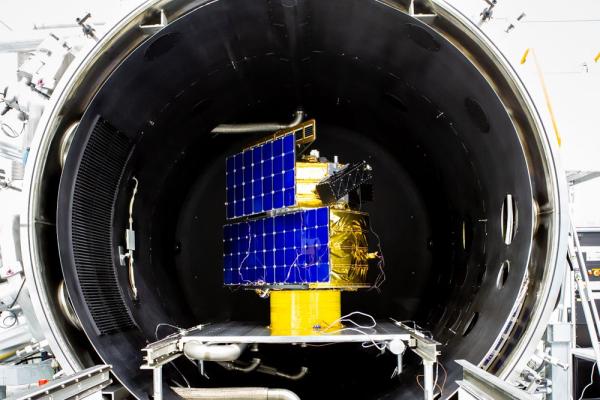Space Machines Company’s Optimus satellite aims to reduce space debris and is transporting a range of cutting-edge Aussie payloads to space.
Optimus is an Orbital Servicing Vehicle (OSV) designed and manufactured by Space Machines Company, an Australian-based in-space transportation and satellite service provider.
The largest Australian commercial satellite to date will demonstrate its capability in providing existing space infrastructure and satellites with life-extension services, inspections and assistance on-orbit.
The 270 kg OSV will offer a unique taxi-style service in orbit, which can physically move other satellites to new positions. Another key objective of the spacecraft is to reduce space debris by extending the life of spacecraft that would otherwise be forced to shut down.

“The successful launch of Optimus opens up new possibilities for how satellites are launched and operated. We believe it will transform the economics of space infrastructure," said Rajat Kulshrestha, Space Machines Company CEO.
"As the foundational asset in our architecture of servicing vehicles designed to repair, refuel, upgrade and relocate other satellites, Optimus enables us to provide services to extend satellite lifetimes, reduce space debris and sustainably scale space activities.”
All aboard
The Australian-made OSV is also carrying multiple Australian payloads, several which have gone to space for the first time, including:
- The HEO Robotics Holmes Imager, a space domain awareness camera which captures high-resolution imagery of objects as they pass the Optimus spacecraft.
- The Over The Rainbow hyperspectral imager from Esper, designed to capture detailed hyperspectral images from space.
- Multiple units of the SE-1 edge computer from Spiral Blue, the most powerful in-space computer outside of a space station.
- Dandelions’ mechanical test of a hemp-based composite for space-based construction
- The Advanced Navigation Boreas X90, an Inertial Navigation System (INS) that will assist Optimus with manoeuvring and satellite docking.
- The ANT61 Brain, a world-first space-grade neuromorphic computer which will demonstrate recognition and visual inspection of satellite elements, with real-time on-board processing.
- Valiant Space’s VS-1 thruster, which will be performing numerous orbit changing manoeuvres for SMC’s mission and is the first Australian bi-propellant propulsion system to fly to space.
- State-of-the-art printed flexible solar cell technology from CSIRO, which will be studied as a possible energy source for future space endeavours.
The technology from Esper and Spiral Blue will also combine on Optimus to launch Rainbow Python, an Australian-first integrated hyperspectral instrument with on-board processing in space.
Caption for the main image: Optimus satellite during the experimental campaign at the National Space Test Facility. Photo credit: Cristy Roberts, ANU

Prioritising sustainability in space activities

